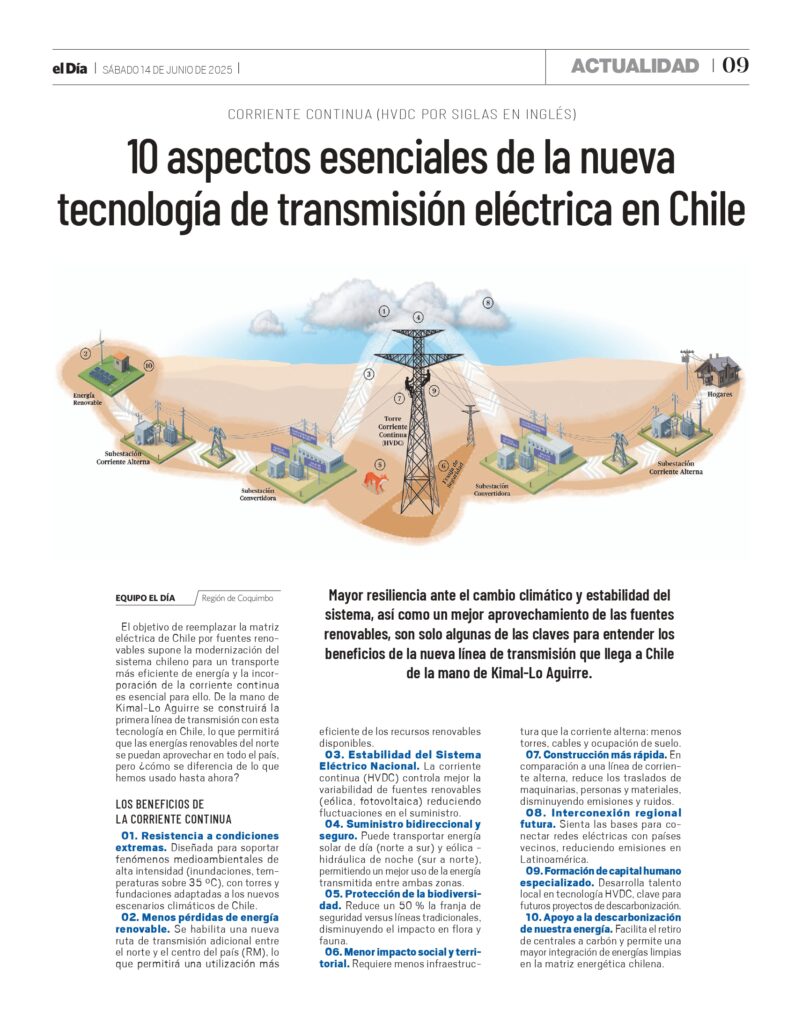Greater resilience to climate change and system stability, as well as better use of renewable sources, are just some of the keys to understanding the benefits of the new transmission line coming to Chile thanks to Kimal-Lo Aguirre.
The goal of replacing Chile’s electricity matrix with renewable sources involves modernizing the Chilean system for more efficient energy transport, and the incorporation of direct current is essential to this. Kimal-Lo Aguirre will build the first transmission line with this technology in Chile, which will allow renewable energy from the north to be used throughout the country, but how does it differ from what we have used until now?
THE BENEFITS OF DIRECT CURRENT
01. Resistance to extreme conditions. Designed to withstand high-intensity environmental phenomena (floods, temperatures above 35 °C), with towers and foundations adapted to Chile’s new climate scenarios.
02. Less renewable energy loss. A new additional transmission route between the north and the center of the country (RM) is enabled, allowing for more efficient use of available renewable resources.
03. Stability of the National Electric System. Direct current (HVDC) better controls the variability of renewable sources (wind, photovoltaic), reducing fluctuations in supply.
04. Bidirectional and secure supply. It can transport solar energy during the day (north to south) and wind and hydroelectric energy at night (south to north), allowing for better use of the energy transmitted between both areas.
05. Protection of biodiversity. It reduces the safety strip by 50% compared to traditional lines, decreasing the impact on flora and fauna.
06. Lower social and territorial impact. Requires less infrastructure than alternating current: fewer towers, cables, and land occupation.
07. Faster construction. Compared to an alternating current line, it reduces the movement of machinery, people, and materials, decreasing emissions and noise.
08. Future regional interconnection. It lays the foundation for connecting electricity grids with neighboring countries, reducing emissions in Latin America.
09. Training of specialized human capital. It develops local talent in HVDC technology, which is key to future decarbonization projects.
10. Support for the decarbonization of our energy. It facilitates the retirement of coal-fired power plants and allows for greater integration of clean energy into the Chilean energy matrix.
